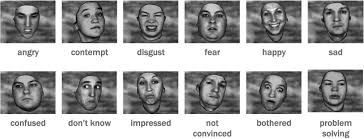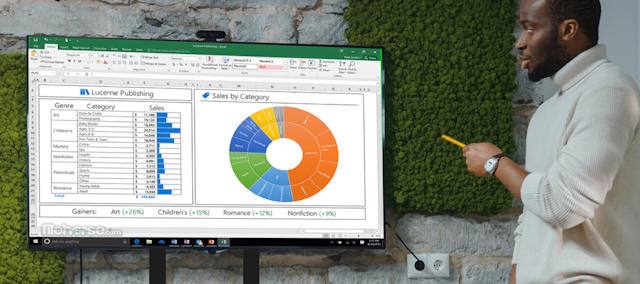Product insights • October 05, 2023
Close that business deal, cue in with interactive display (Pt. 2)

Understanding nonverbal cues ¶
Studies have repeatedly shown that there are seven facial expressions that are actually universal throughout the human race. These include anger, contempt, disgust, fear, happiness, sadness, and surprise.
With this type of expressions hard-wired into our sub-conscious self, it’s no surprise that we use nonverbal communication so much to accentuate our true feelings. In fact, it has been estimated that as much as 80 percent of communication is about what is not being said. Rather, it’s based on perceptions of a person’s gestures, eye contact, clothing, and environment. This makes interactive large format screens a must-have tool for virtual video communication, where each cue given off can easily be interpreted in real-time.

Being tuned into someone’s nonverbal communication cues can help you determine what is truly being said beyond just the words being spoken. Sometimes a person may be agreeing with you out loud, while clues, such as avoiding eye contact or fidgeting, tell that perhaps they are not being completely honest with their words. That means that noticing when a person’s nonverbal and verbal communication match will help determine that they are on board with your idea.
This understanding of body language can also be instrumental in helping others accept your point of view. Using techniques such as “mirroring” help put others at ease. This technique involves subtly mimicking the other person’s gestures, body language, and even speech patterns. Mirroring happens naturally when people communicate, but strategic use of the method can help make others more comfortable in a tense situation. When using this technique, it is important that the person not feel they are being teased, which means that the mirroring should not be exact.
Reading nonverbal cues ¶
In addition to those things mentioned above, there are literally hundreds of nonverbal cues that can be used to ascertain what someone else is communicating. For example:

Aggressive: frowns, pursed lips, glaring, squinting, clenching fists, red face, shaking a finger, sudden movements.
Attentive: holding still while listening, leaning forward, gazing, ignoring distractions, nodding slowly, paraphrasing what’s been said.
Bored: looking around, drumming fingers, yawning, slouching, finding other things to do, looking at the clock repeatedly.
Deceptive: forced smiles (eyes aren’t smiling when the mouth is), sweating, sudden movements, twitching, seems distracted, fidgeting.
Defensive: covering vital organs, lowering chin, crossing arms, using a physical barrier, making oneself small, tensing up, glancing around.
Relaxed: steady breathing, lowered voice, arms hang to sides, using hands when talking, smooth gestures, smiling, even speed and pitch in speaking, little blinking, unwrinkled forehead.

Large-format interactive displays enable you read non-verbal cues your team are not even aware they are giving off. You have 3 minutes to grab their attention and radical interactive technology tools to hold it – crystal clear picture; rich, steady audio; annotation tools; multi-media sharing options for presentations, video clips and instant feedback or engagement from your audience.
Work from anywhere and hybrid work schedules will be the new mantra as economies re-open. Just as organizations have begun settling into work-from-home arrangements as their ‘new normal,’ there is going to be a ‘next normal’ emerging quickly on the horizon — one that makes returning to work-from-everywhere scenarios possible. Being able to decode nonverbal cues will come in handy when communicating with staff members and other stakeholders.
Professionals, such as knowledge workers (educators, bankers, architects, as well as front-line workers in healthcare, retail and customer support contact centers) need to learn to deliver high-touch services from locations outside traditional physical settings, and with this comes the need to master the act of body cue-reading.
So, the upcoming meeting with your partners, managers or financiers? Key into the pointers listed above– pitch the idea, receive non-verbal feedback, decode and plan a counter as you discover what piques their interest.
Good luck!
To take learning, business interaction, ideation and team collaboration to the next level using the best of interactive technology available, let us take a look at what you presently use, assess your needs and recommend what would best suit your home office or establishment to enhance productivity, ensure a sustained profitable business and expansion

